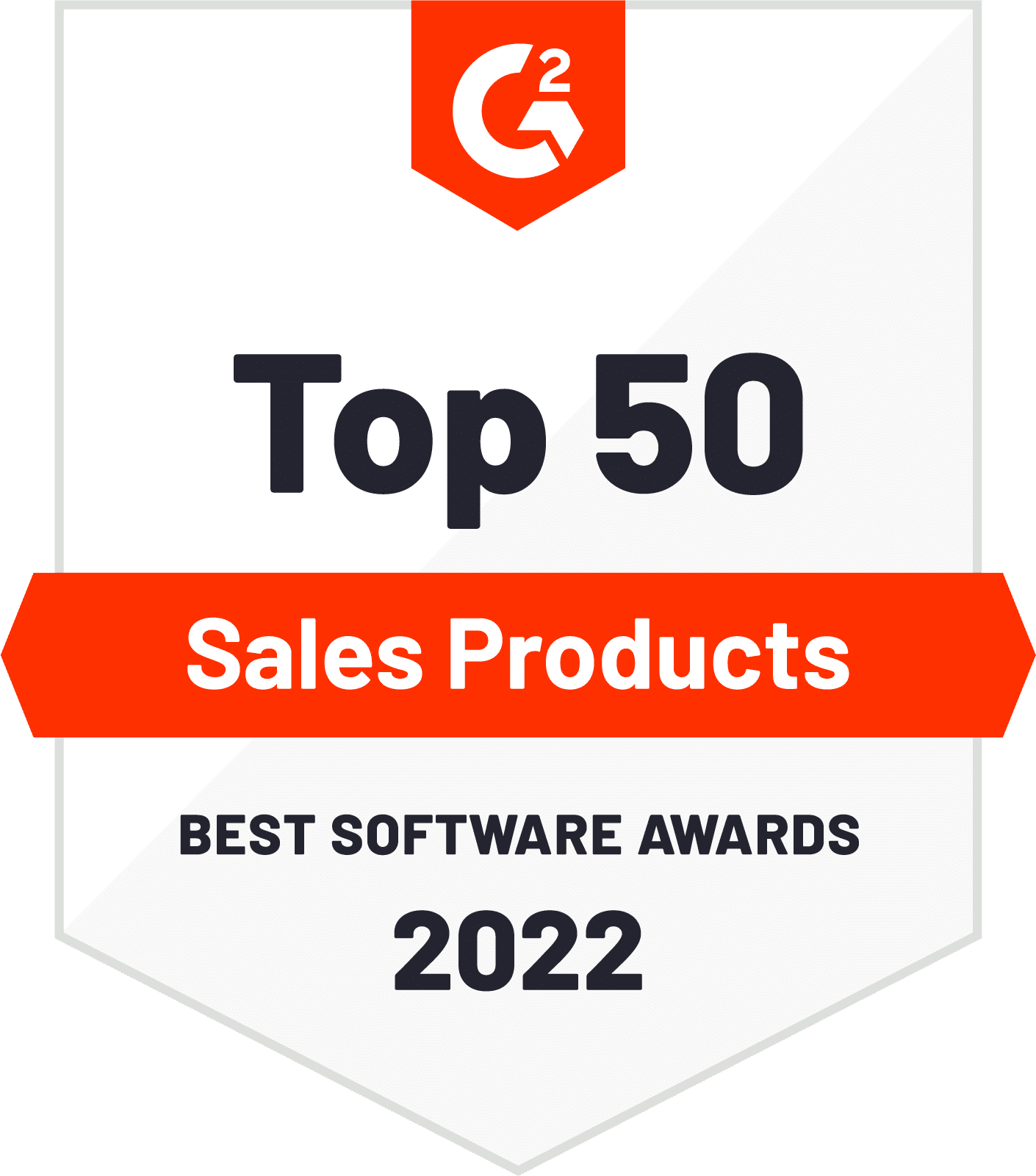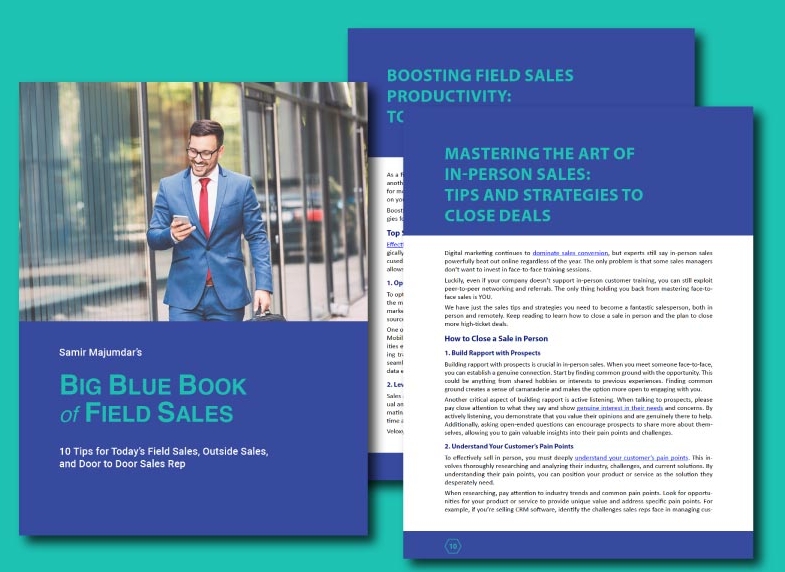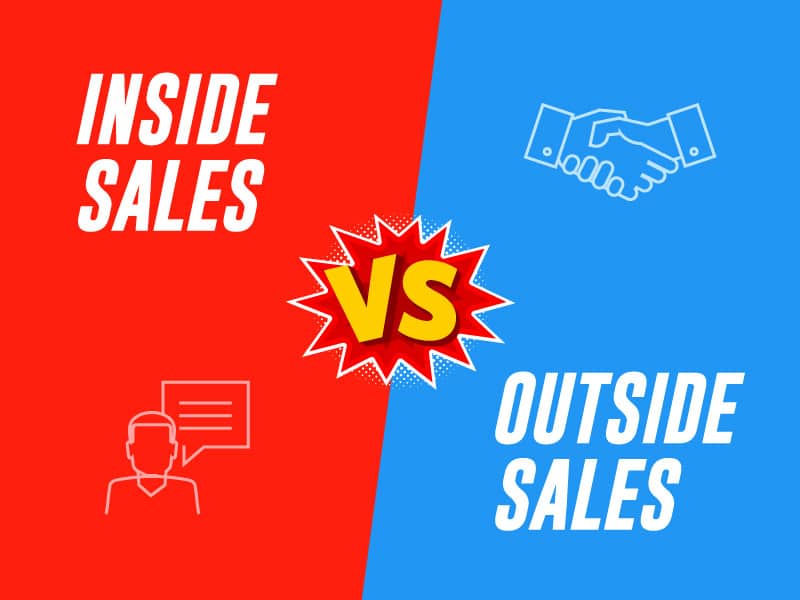
How to Get Into Medical Device Sales (Key Strategies for Success)
Dreaming of a rewarding and challenging career in medical device sales? You should be! The medical device industry is poised to reach nearly $800 billion in global annual sales by 2030. If you’re looking to cut yourself a piece of that pie, then you’re in for an exciting journey! In this guide, we’ll explore the ins and outs of becoming a medical
















Despite discussions of outside sales dying, field sales are far from obsolete. Outside sales remain invaluable to companies, even as we move towards hybrid models.
A 2023 study revealed that field sales teams outperformed their inside counterparts by 14%. Highlighting the enduring significance of in-person interactions in the sales process.
While inside sales might excel in certain areas, field sales teams bring a depth of understanding that goes beyond numbers. In-person meetings create more space to read between the lines, interpret nuances, and establish bonds that last beyond a single transaction.
In this guide, we’ll explore field sales enablement in-depth. We’ll discuss strategies to make the most of field sales’ impact and why it remains significant in today’s sales landscape.
Grab a warm coffee ☕️ or tea 🍵 and let’s get started!
Download Now: The Big Blue Book of Field Sales
Sales Managers — be sure to read the 3 chapters on sales productivity and sales acceleration! And then pass the book to your field reps.
Get Your Free EbookWhat Is Field Sales Enablement?
Field sales enablement empowers sales teams who work outside the office. It’s all about equipping these on-the-go representatives with the right tools, knowledge, and support to excel in their roles. Unlike inside sales, which rely on digital communication, field sales involve personal meetings, presentations, and relationship-building on the ground.
The main goal of field sales enablement is to make sure these reps have everything they need to succeed. This includes having up-to-date info about what they’re selling and being equipped with technology that aids their sales pitches.
Field Sales vs. Digital Sales Enablement
The primary difference lies in the sales environment and customer interactions. Field sales personnel spend the bulk of their time traveling, visiting clients, and fostering relationships in person.
This direct interaction allows for a deeper understanding of customer needs. In turn, they’re able to develop a more personalized sales approach. Inside sales, while also focused on building relationships, relies on remote communication tools to connect with clients efficiently.
The strategies and tools used in each approach differ significantly. Field sales teams often require more mobility-oriented tools. Such as mobile CRM and sales systems to manage client interactions on the go.
On the other hand, inside sales teams leverage technology-driven solutions. These solutions include cold email automation and video conferencing platforms to maintain consistent communication with clients.
Why Field Sales Enablement Is Important
Field sales enablement is crucial for several reasons. It ensures they have the right information at the right time to engage customers and drive sales.
By providing streamlined processes and support, enablement boosts the efficiency and productivity of sales representatives. This allows them to focus more on selling and less on administrative tasks.
Enablement ensures that your sales force delivers a consistent brand message and product information to customers. This consistency builds trust and credibility, which are essential for successful sales.
With enablement, sales teams stay updated on:
This knowledge helps them adapt quickly to changes. Making them more agile and responsive in the field.
In addition, well-equipped sales teams provide better customer experiences. They can address customer concerns effectively, offer relevant solutions, and provide valuable insights. In turn, this leads to increased customer satisfaction and loyalty.
The Consequences of Not Having an Enablement Strategy for Field Reps
When not properly supported, field sales teams face several challenges that make it really hard to close deals.
Without access to updated product information, reps are more likely to provide incomplete or inaccurate pitches to customers. You also run the risk of each field agent presenting information differently. Inconsistencies in messaging and branding can confuse customers and diminish credibility.
Use the Revenue Growth Calculator
How much quarterly or yearly revenue is your field sales team missing out on by not being truly enabled? Use our calculator now to find out!
Use the CalculatorWhen to Focus on Field Sales Enablement
Focusing on field sales enablement is important from the start, but its significance continues as your sales team evolves and grows. Here are key moments to prioritize field sales enablement:
Onboarding New Sales Reps
Implement comprehensive onboarding programs covering company culture, product knowledge, sales processes, and tools. Pair new hires with experienced team members to facilitate learning and integration into the team. Provide scenarios and role-playing exercises to apply the knowledge practically.
If needed, consider partnering with a digital learning provider to keep training materials up to date for new hires.
New Product Launches or Updates
Offer early access to information and training on new products or updates before their launch. Provide detailed documentation, FAQs, and case studies to familiarize the team with new offerings. Create simulated sales scenarios for the team to practice pitching new products.
Sales Workflow Improvements
Develop specific training modules for sales process improvement or new technologies adopted by the sales team. Provide immediate assistance and guidance during the transition period to new processes or tools.
Expanding Your Team
Develop scalable training models that can accommodate larger teams without compromising quality. This will ensure consistency in training and enablement as the team expands.
Market Changes or Shifts in Customer Needs
Provide updated market insights and competitive analyses to keep the team informed. Adjust field sales enablement strategies to align with market shifts or changes in customer needs.
How to Develop an Effective Field Sales Strategy
Developing a field sales strategy involves a series of steps to maximize sales performance. Here’s a quick checklist to get you started.
1. Understand Your Market and Customers
Start by learning about the market where you’ll sell your products or services. This means studying trends, checking out what your competition is doing, and finding opportunities others might have missed.
Get to know your customers really well. Understand who they are, what they like, what problems they face, and what they need.
2. Set Clear Objectives and Goals
Be clear about what you want to achieve with your sales efforts. Set specific goals that you can measure and actually reach. These goals should make sense for your overall business strategy.
Consider discussing:
Identifying these key things will help you develop a field sales enablement strategy that aligns with the overall goals of the business.
3. Create a Streamlined Sales Process
Make a step-by-step plan for how your field sales team will do their job. This includes:
Use helpful tools like computer programs or apps to make your team’s job easier. These tools can keep track of who your team is talking to and where they’re going and even give them tips on how to sell more with ease.
Once you’ve identified key selling locations, split the market into smaller sections. Each person on your sales team gets their own area to focus on. This way, you cover more ground and don’t waste time going after the same customers.
4. Motivate Your Field Sales Team With Incentives
Keep your team motivated and excited to go out into the field. Give them rewards when they do a great job. Support them when they need help and talk to them regularly to see how they’re doing.
Incentives should be aligned with your company’s goals and values. If incentives don’t align with broader objectives, they may drive behaviors that conflict with your company’s mission.
For example, Wells Fargo faced a scandal where employees were found to have opened millions of fake accounts without customers’ consent. The sales teams were under intense pressure to meet aggressive sales targets and were incentivized with bonuses and promotions tied to the number of accounts opened.
This created a toxic environment where employees felt compelled to resort to unethical practices to meet unrealistic goals set by the company. The incentive structure heavily emphasized quantity over quality. Leading to behaviors that ultimately damaged the bank’s reputation and trust among its customers.
Remember, the right incentives motivate employees to perform at their best consistently. Well-designed incentives can boost morale, foster a positive work environment, and encourage employees to go above and beyond to achieve targets.
5. Measure and Learn as You Grow
Keep track of important numbers like how many sales your team makes, how big the sales are, and how long it takes to make a sale. Use this information to figure out what’s working well and what needs to change.
Always ask for feedback from your team. They might have good ideas on how to make things better. Keep an open mind and be willing to make changes based on what you learn.
Let’s discuss some key metrics you can track to get a better idea of how your field sales enablement program is performing.
Field Sales Enablement Pitfalls to Avoid
As you’ve read above, an effective field sales strategy involves several key considerations. To maximize success, steer clear of certain pitfalls.
Ineffective territory planning might lead to uneven distribution of resources or overlooking potential opportunities. Analyze territories strategically, considering factors like customer density, buying behaviors, and competition.
Lack of coordination between field sales, marketing, and other departments can hinder overall strategy effectiveness. Encourage collaboration and clear communication channels to ensure a cohesive approach.
Concentrating solely on selling without building relationships or providing value beyond the sale can limit long-term success. Aim for a balance between sales and fostering lasting customer relationships.
Measuring the Success of Your Field Sales Enablement Strategy
Measuring success in field sales enablement is like checking the scorecard to see how well the sales team is doing. It’s about keeping an eye on specific things to know if the strategy is working.
Download Now: The 7 Sales Secrets to Success
Want to know how you can EASILY improve your sales enablement strategy for more wins? Read our Strategic Seven eBook today!
Get Your Free eBookSales Performance Metrics
Measuring success in field sales enablement begins with a primary focus on revenue generated. It serves as a cornerstone metric. Providing a clear and concrete assessment of the direct impact enablement programs have on overall sales performance.
Other sales metrics include:
Training Effectiveness
Measure how many reps complete training programs. Assess how much of the training material the sales team retains and applies in their day-to-day activities. Measure the time it takes for new hires to become fully productive after training.
Key Training metrics include:
Content and Tools Utilization
Tracking how the sales materials and tools are used helps us see if they’re helpful. Check how often the sales team looks at and uses the brochures, presentations, or other provided materials.
By keeping an eye on how much they use these things, you can tell if they’re making a difference in how your field sales team does their job.
You can track this using metrics like:
Sales Team Efficiency
Measuring your field sales team’s efficiency involves keeping track of how much time they spend actually making sales compared to handling other tasks.
Look at how many calls or meetings each person does. This helps make sure they’re using their time wisely. Focusing on activities that drive sales and productivity.
Metrics you can use to track field sales productivity include:
Customer Feedback
Tracking the success of a field sales team through customer feedback metrics is crucial for understanding customer satisfaction and the team’s effectiveness.
Examples of key metrics to consider include:
It’s important to keep in mind that measuring success isn’t just about hitting targets. It’s about understanding what contributes to success and continuously improving your strategies based on that understanding. By focusing on these metrics and feedback loops, you can refine your field sales enablement approach for better outcomes.
Set Your Field Sales Reps Up For Success With Veloxy
Mastering field sales enablement isn’t just a choice. It’s a necessity for thriving in today’s competitive market. Elevate your sales game and drive unparalleled results by partnering with Veloxy.
Most sales professionals spend over 50% of their time on non-selling activities. With Veloxy, your team can focus more on engaging with prospects and increasing their conversion rate.
Our cutting-edge tools and expertise in field sales enablement can empower your team, enhance customer relationships, and boost revenue. Join thousands of happy customers who started with a free trial.